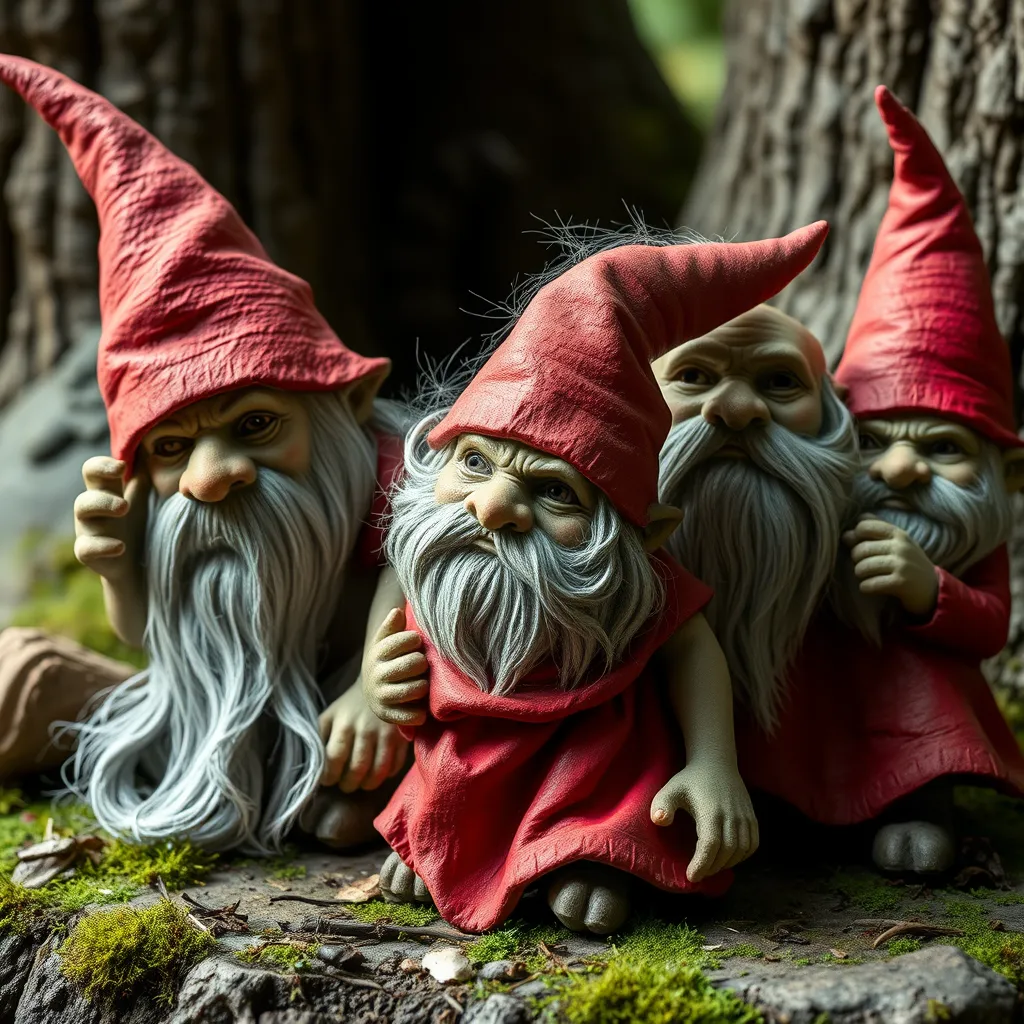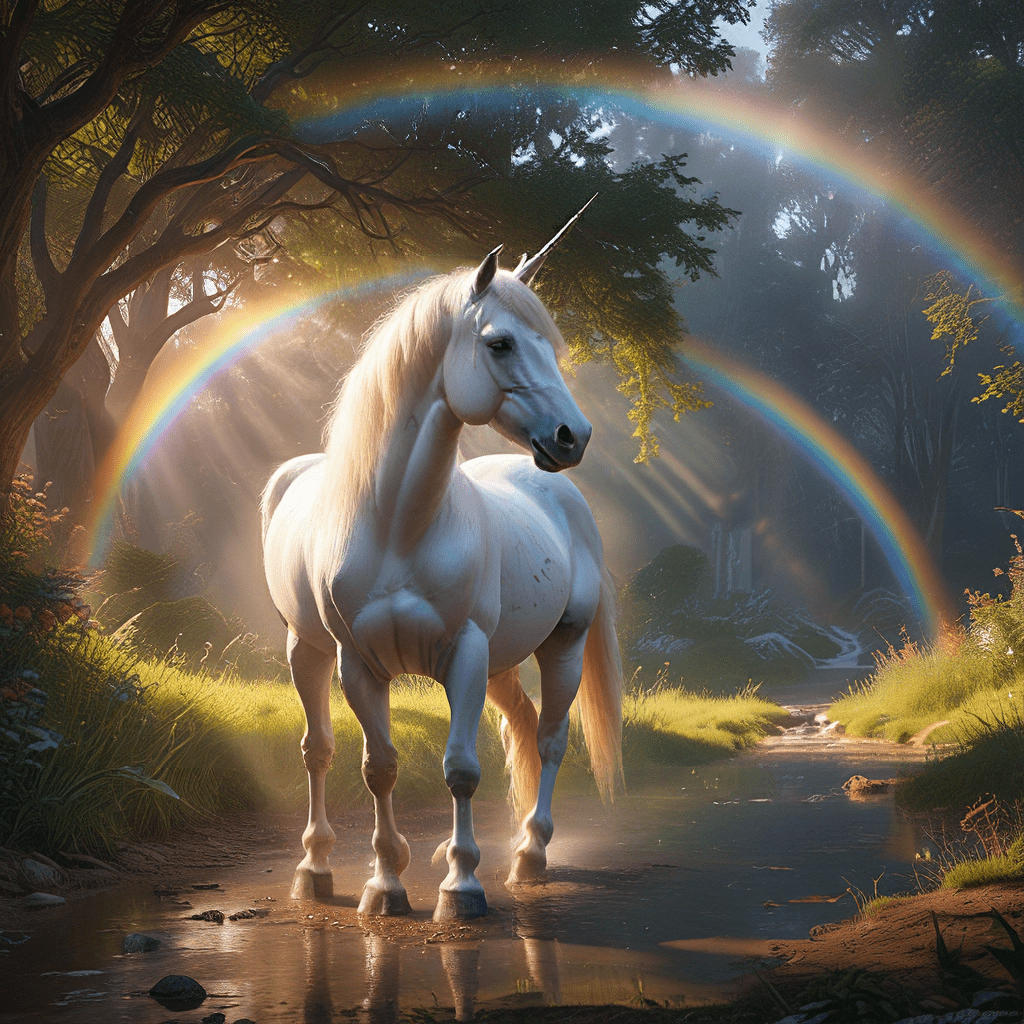Germanic Gnomes: The Kobolds & Zwerge of Folklore
I. Introduction
Germanic folklore is rich with enchanting tales and mythical creatures that have shaped the cultural landscape of Germany and surrounding regions. Among these captivating figures are the Kobolds and Zwerge, two types of gnomes that play significant roles in various narratives. These beings embody the spirit of the earth, often depicted as guardians of nature and treasure, and they are integral to understanding the cultural narratives of Germanic societies.
II. The Origins of Kobolds
A. Etymology and Historical References
The term “Kobold” is derived from the German words “Kobold” or “Kobolde,” which can be traced to the Middle High German “cobold,” meaning “goblin” or “sprite.” The roots of the word suggest a connection to household spirits or creatures that dwelled in homes.
B. Early Depictions in Germanic Texts
Kobolds have been referenced in various Germanic texts from the Middle Ages, often described as small, humanoid beings. They were believed to reside in homes, hearths, and mines, sometimes assisting with household chores or mining tasks. Their appearances were first noted in folklore collections and literature, showcasing their dual nature as helpful or troublesome spirits.
C. Variations Across Different Regions
The characteristics and roles of Kobolds vary significantly across different Germanic regions:
- In Northern Germany, they are often depicted as mischievous sprites.
- In Southern Germany, they are considered more benevolent household helpers.
- In some areas, Kobolds are associated with specific locations, such as rivers or forests.
III. Characteristics of Kobolds
A. Physical Appearance and Traits
Kobolds are typically described as small, gnome-like creatures, often standing no taller than a child. They are often depicted wearing simple, rustic clothing made from natural materials. Their appearances vary, but common traits include:
- Pointed hats or caps.
- Beards or whiskers.
- Green or earthy-colored attire that blends with their natural surroundings.
B. Behavioral Attributes: Helpful vs. Mischievous
Kobolds are known for their dual nature. While some are helpful and protective, others can be quite mischievous. Their behavior can be categorized as follows:
- Helpful Kobolds: These spirits assist with tasks, such as cleaning or farming, often going unnoticed.
- Mischievous Kobolds: These tricksters might hide household items, create noise at night, or play pranks on unsuspecting humans.
C. Associations with Specific Environments
Kobolds are closely linked to specific environments, which influence their behavior and traits. Common associations include:
- Household Spirits: Found in homes, they protect families and often help with chores.
- Mines: In mining regions, Kobolds are considered guardians of treasures, sometimes leading miners to rich deposits.
IV. The Mythology of Zwerge
A. Definition and Origin of Zwerge in German Folklore
Zwerge, or dwarfs, are another essential component of Germanic folklore. They are often depicted as skilled craftsmen, particularly in metalwork and stone carving. The concept of Zwerge can be traced back to ancient Germanic tribes and their interactions with Norse mythology.
B. Connections to Norse Mythology and Dwarven Lore
The Zwerge of German folklore share similarities with the dwarves found in Norse mythology, particularly in the “Edda” texts. Both portray these beings as wise, hardworking, and skilled in craftsmanship. They were believed to possess a deep understanding of the earth and its treasures.
C. Cultural Significance in Literature and Art
Zwerge have been popular figures in German literature and art, often serving as symbols of industriousness and resourcefulness. They are prominently featured in fairy tales, such as the Brothers Grimm’s “Snow White,” where the seven dwarfs play crucial roles in the story.
V. Roles and Functions in Folklore
A. Kobolds as Household Spirits and Protectors
Kobolds serve as protectors of the home, often associated with domestic peace and prosperity. They are believed to bring good fortune to families by safeguarding the household and ensuring that chores are completed efficiently.
B. Zwerge as Craftsmen and Guardians of Treasures
Zwerge are renowned for their craftsmanship, often depicted as miners and smiths who create powerful artifacts and treasures. Their expertise in metalwork is legendary, and they are often portrayed as the creators of magical items in folklore.
C. The Duality of Their Roles: Benevolent Helpers vs. Tricksters
Both Kobolds and Zwerge embody a duality in their roles. While they can be helpful and protective, they can also exhibit tricky behavior. This duality reflects the complexities of human nature, where benevolence and mischief coexist.
VI. Modern Interpretations and Adaptations
A. Kobolds and Zwerge in Contemporary Media
In modern times, Kobolds and Zwerge have found their way into various forms of media, including books, films, and video games. They are often depicted as quirky, endearing characters that add charm and humor to stories.
B. Influence on Popular Culture and Fantasy Genres
The influence of Kobolds and Zwerge extends into the fantasy genre, inspiring numerous works in literature and gaming. Their characteristics have been adapted and reinterpreted in various ways, blending traditional folklore with contemporary storytelling.
C. Evolving Perceptions and Representations
As societal values evolve, so too do the perceptions of these mythical creatures. Modern interpretations often highlight their complexity, showcasing them as multifaceted beings with rich personalities and motivations.
VII. Cultural Impact and Legacy
A. The Role of Kobolds and Zwerge in German Cultural Identity
Kobolds and Zwerge are integral to German cultural identity, representing the connection between humanity and nature. They embody the spirit of the earth and the importance of folklore in shaping cultural narratives.
B. Comparisons with Gnome Figures in Other Cultures
Similar figures can be found in various cultures worldwide, such as the garden gnomes of European tradition or the “Nisse” in Scandinavian folklore. These comparisons highlight the universal themes of nature, protection, and mischief found in gnome folklore.
C. Preservation of Folklore Through Festivals and Storytelling
Folklore surrounding Kobolds and Zwerge is preserved through storytelling, festivals, and cultural celebrations. These traditions keep the legends alive, allowing new generations to connect with their cultural heritage.
VIII. Conclusion
In summary, Kobolds and Zwerge are fascinating figures within Germanic folklore, reflecting the complexities of human nature and the relationship between humanity and the natural world. Their enduring legacy continues to inspire modern interpretations and adaptations, inviting individuals to explore the rich tapestry of Germanic folklore and mythology further. The stories of these gnomes not only entertain but also remind us of the importance of cultural narratives in shaping our identities and understanding our place in the world.



